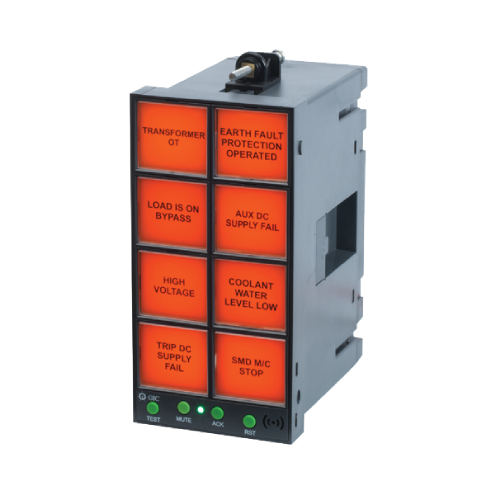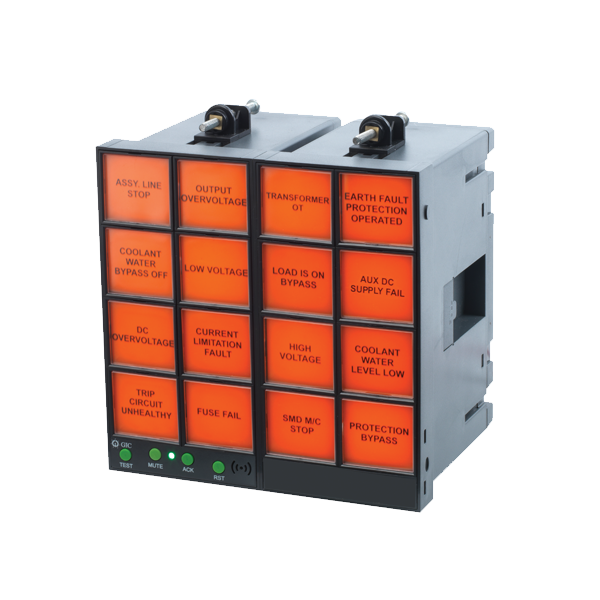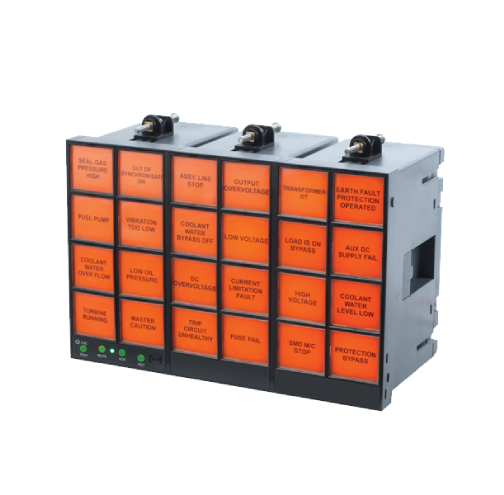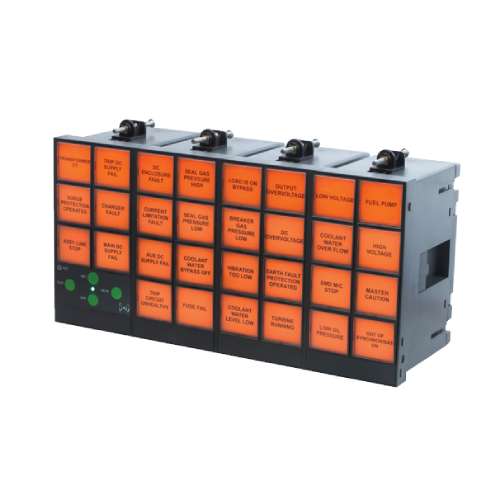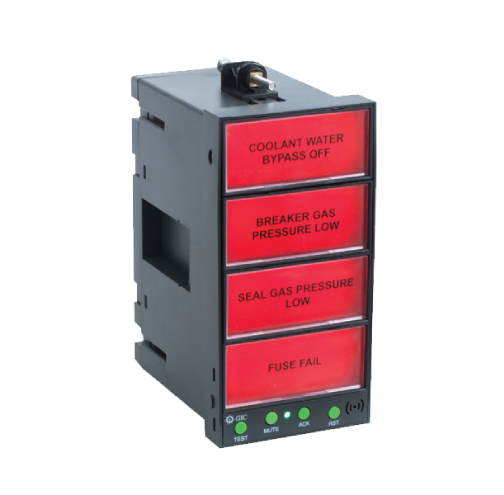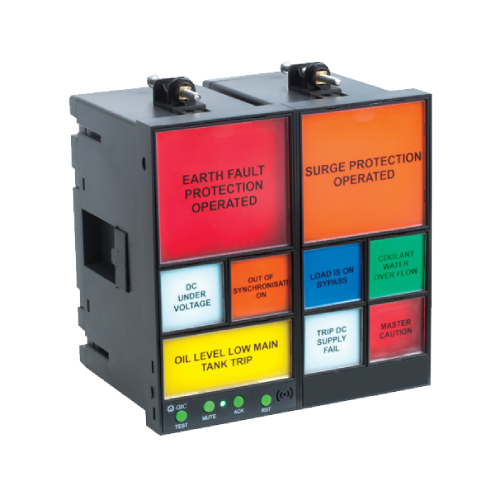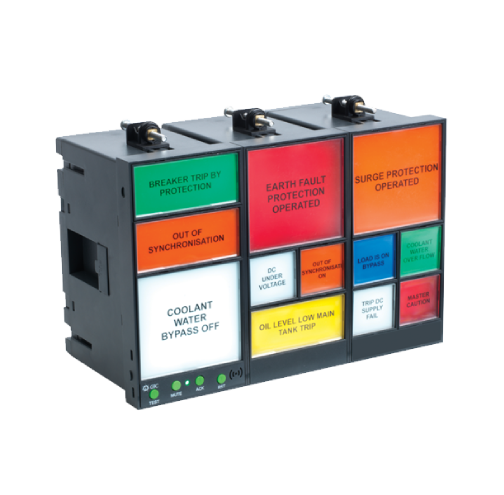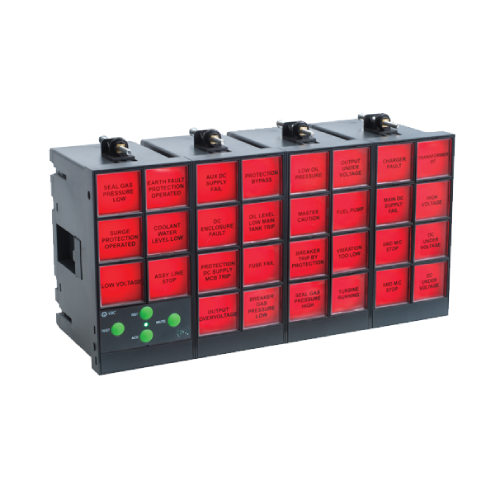What is Alarm Annunciator?
An alarm annunciator, also known as an annunciator panel, is a crucial component in industrial control systems. It is designed to provide visual and audible alerts to operators, indicating the status of various alarm conditions in a process or facility. The alarm annunciator acts as a centralized monitoring system, displaying alarms in a clear and concise manner, and ensuring timely responses to critical events.
An alarm annunciator consists of multiple alarm channels, each representing a specific alarm point or event. When an alarm condition is triggered, such as equipment failure, abnormal process parameter, or safety violation, the corresponding channel on the annunciator panel activates, indicating the specific alarm source. The annunciator typically employs bright LED indicators, accompanied by audible alarms, to attract the operator's attention and facilitate quick identification of the alarm source.
The alarm annunciator offers configurable alarm prioritization and alarm acknowledgement features. Operators can prioritize alarms based on severity and customize alarm response actions. Once an alarm is acknowledged, the annunciator silences the audible alarm while maintaining the visual indication until the alarm condition is resolved.
Importance of Alarm Annunciator
The importance of Alarm Annunciators in industrial settings cannot be overstated. These devices play a critical role in ensuring the safety and efficiency of operations by providing timely and accurate alarm notifications.
One of the primary reasons to use an Alarm Annunciator is to enhance situational awareness. In complex systems with numerous sensors and inputs, it can be challenging for operators to monitor all the parameters simultaneously. Alarm Annunciators consolidate and prioritize alarms, presenting them in a clear and organized manner. This allows operators to quickly identify and respond to critical events, preventing potential hazards or equipment failures.
To illustrate, consider a power plant where an 8, 16, 32 or 48 window annunciator is deployed. It monitors various parameters such as temperature, pressure, and voltage levels. In the event of an abnormal condition, the Annunciator triggers audible and visual alarms, alerting operators to take necessary measures. This proactive response can prevent equipment damage, and unplanned downtime, and even ensure the safety of personnel.
Working Principle of GIC’s Alarm Annunciator
Whenever there is a change of input contacts from Normally Open to Close or from Normally Close to Open position, the annunciator changes from a rest condition to an alarm condition. Hence there is an immediate recognition of fault input which will have a corresponding visual and audio alarm as per the particular selected program sequence. The base unit of the 8, 16, 32 and 48 window annunciator has four programmable keys for the Mute, Acknowledge, Reset & Test functions. On pressing the Mute key the internal buzzer can be deactivated. Acknowledge key is used to accept the fault condition, The reset key enables resetting the alarm annunciator to its default state and the Test key helps to perform the complete test of the system.
Features
- Standard models available from 2 to 48 windows
- Choice of 3 window sizes and 6 different window colours
- Optically isolated fault inputs with wide fault input voltage range (12 – 240V AC/DC +/-10%)
- Field selection for NO / NC fault input contacts, a grouping of alarms, window size configuration
- Space saving due to the lower depth of only 100mm
- Integral push buttons for Test, Acknowledge, Mute and Reset operations
- Four SPDT relay outputs (2 for grouping, 1 for external hooter, 1 for ring back sequence)
- 6 Field selectable operation sequences as per ISA standard
- Integral buzzer for audible alarm output of 90 dB
- Communication interface with RS485 Modbus RTU protocol
- Replaceable LEDs, Fast Scan, Manned / Unmanned, Supervisory Relay & Supply fail annunciation available
Frequently Asked Questions
An alarm annunciator is a device that gives visual and audio indications of the occurrence of a fault in a machine or a process.
The purpose of an annunciator is to monitor the health of a machine or process. On the occurrence of an abnormal condition in a machine or process. The annunciator gives visual and audio indications to fetch the attention of the operator or supervisor towards the abnormal condition to timely rectify the fault. It also enhances the machine’s life and reduces the breakdown time of the process.
The different types of annunciators are as follows:
- Fast Scan Annunciator
- Slow Scan annunciator
- AC/DC or AC/AC or DC/DC fail annunciator
- Basic annunciator
- Annunciator with replaceable LEDs, etc.
The alarm panel can be only an indicative panel. Annunciator also comes with RS485 communication so that faults can be monitored through SCADA. Annunciators also follow the ISA18.1 standard for a sequence of operations to be followed on the occurrence of faults.
One window signifies one fault, likewise in Annunciator no. of faults ranges from 2 to 48 windows to monitor 2 to 48 faults.
The size of the annunciator windows are 30x30mm, 60x30mm, 60x60mm.
The standard models are available from 2 to 48 windows
- Choice of 3 window sizes and 6 different window colours
- Optically isolated fault inputs with wide fault input voltage range (12 – 240V AC/DC +/-10%)
- AC-DC Fail Annunciation
- Field selection for NO / NC fault input contacts, a grouping of alarms, window size configuration
- Space saving due to a lower depth of only 100mm
- Integral push buttons for Test, Acknowledge, Mute and Reset operations
- Four SPDT relay outputs (2 for grouping, 1 for external hooter, 1 for ring back sequence)
- 7 Field selectable operation sequences as per ISA standard
- Integral buzzer for audible alarm output of 90 dB
- Communication interface with RS485 Modbus RTU protocol
- Replaceable LEDs, Fast Scan, Manned/Unmanned, Supervisory Relay & Supply fail annunciation available
We give the modular design in Annunciator with multiple of 8 faults in the form of Base+Extension.

